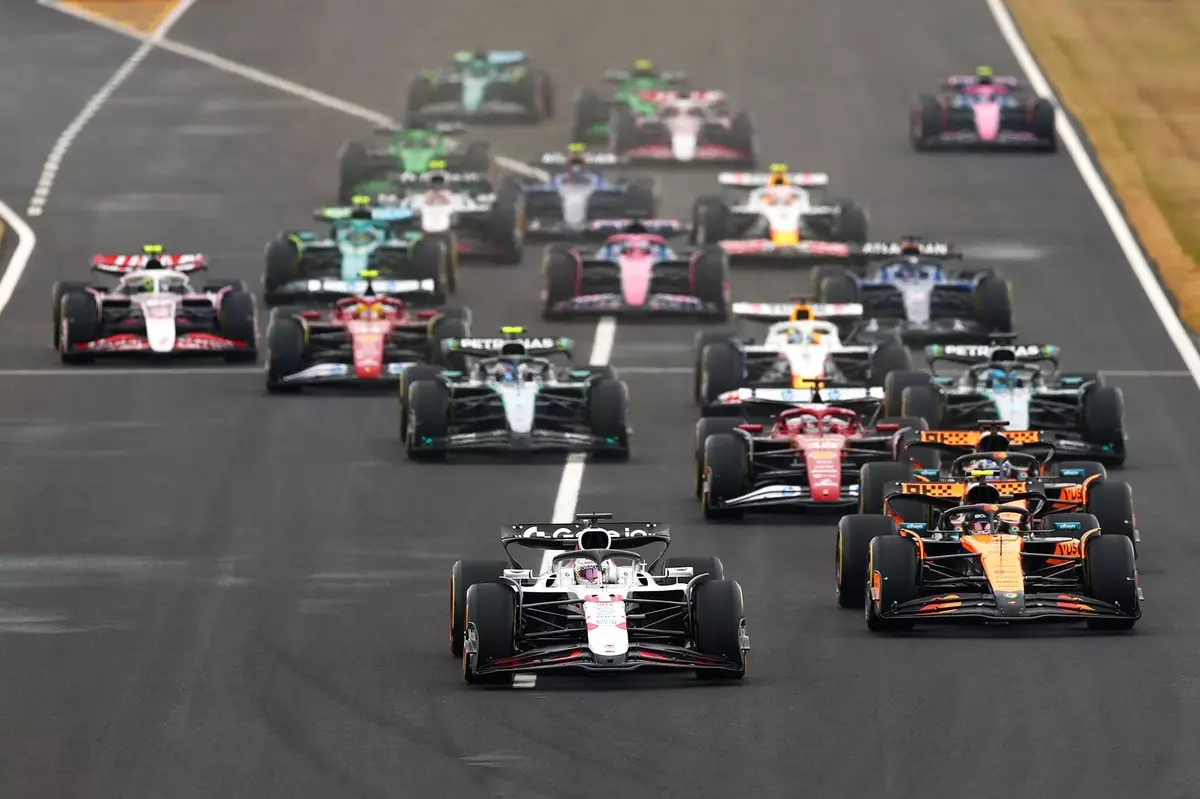In a significant move towards shaping the future of Formula 1, representatives from prominent power unit manufacturers convened in Bahrain last Friday to discuss regulations that would govern engines from the 2026 season onwards. This meeting, presided over by FIA President Mohammed Ben Sulayem, explored the intricate balance between technological advancement and competitive fairness. Unlike previous years where one manufacturer basked in unrivaled glory, this time, the focus was on fostering a level playing field that encourages robust competition among teams.
The looming specter of Mercedes’ overwhelming dominance in 2014 still hangs over the sport. That year marked a seismic shift in F1’s power dynamic, resulting in a skewed competition landscape that left other teams grappling for relevance. This latest roundtable discussion was not just an inquiry into future regulations but an acknowledgment of past failures that have led to disinterest among fans and stakeholders. The engagement of key players such as Audi, Honda, and emerging competitor Cadillac illustrated a collective intent to avoid the pitfalls of the past while aiming for more thrilling and competitive races.
Addressing the Hybrid Formula: The Path Ahead
As the 2026 season approaches, the hybrid engine formula is attracting mixed emotions from stakeholders. Audi and Honda have made their stance clear: they are dissatisfied with any proposals to alter the hybrid specifications that initially lured them to participate in Formula 1. This resistance raises critical questions about the integrity of the regulations themselves and whether their flexibility can accommodate innovations without compromising the competitive spirit of the sport.
Diving deep into the consequences of altering engine rules poses a serious risk. Key players are wary that mid-course adjustments could lead to a fractured relationship with manufacturers who have committed resources and efforts based on current regulations. The idea of reverting to V10 engines, proposed in the meeting, was met with skepticism. While the romantic allure of V10s is undeniable, such changes would likely provoke another cycle of performance divergence, leaving other teams scrambling to catch up.
Notably, the dialogue also extended beyond just the technical specifications of engines; it highlighted a collective desire to enhance competitiveness. Red Bull’s team principal, Christian Horner, emphasized the need for constant evolution in engine performance. “When you introduce new regulations, it’s almost a guarantee that performance gaps will develop,” he remarked, underlining the perils of stagnation in innovation.
Modern Solutions for Competitive Integrity
With the introduction of a budget cap in Formula 1, a novel discourse has emerged around how engines can be modified without incurring financial distress. This scenario presents an opportunity for engine manufacturers to innovate while staying within fiscal constraints. The potential to allow in-season upgrades, while still being responsible and fair, may ignite a renaissance of competitive balance in racing, steering F1 towards a future where power units do not dictate the terms of engagement.
The concept of “performance convergence,” which aims for closer racing and minimized disparities between teams, is at the forefront of these discussions. The power unit manufacturers collectively recognize that their survival hinges on the excitement and unpredictability of races. Horner’s insightful contribution to the dialogue encapsulates the vision many share: a competitive landscape where fans are on the edge of their seats, fired up by close battles rather than resigned to a predetermined outcome.
Communication between influential figures such as team principals and manufacturers is paramount for consolidating a roadmap that fosters innovation while ensuring equitability. This collaborative effort is pivotal for mitigating the performance gaps that have historically eroded the competitiveness of the grid.
Looking Beyond 2026: Shaping F1’s Destiny
As stakeholders voiced their opinions in Bahrain, it became evident that this meeting was just the beginning of a journey toward a more equitable F1. The underlying ambition transcends mere engine specs—it is about crafting a future where every manufacturer has the chance to compete on an even keel. The initiatives discussed signal an era where power units evolve hand in hand with the sport’s ethos of competition and excitement.
Leaving behind the mistakes of the past, it is crucial that F1’s governance adopts a forward-thinking approach that not only respects the tradition of the sport but also embraces innovation. The outcomes from these discussions will define not only the trajectory of teams but the dynamic that drives the allure of Formula 1, captivating old fans and enticing new ones.

